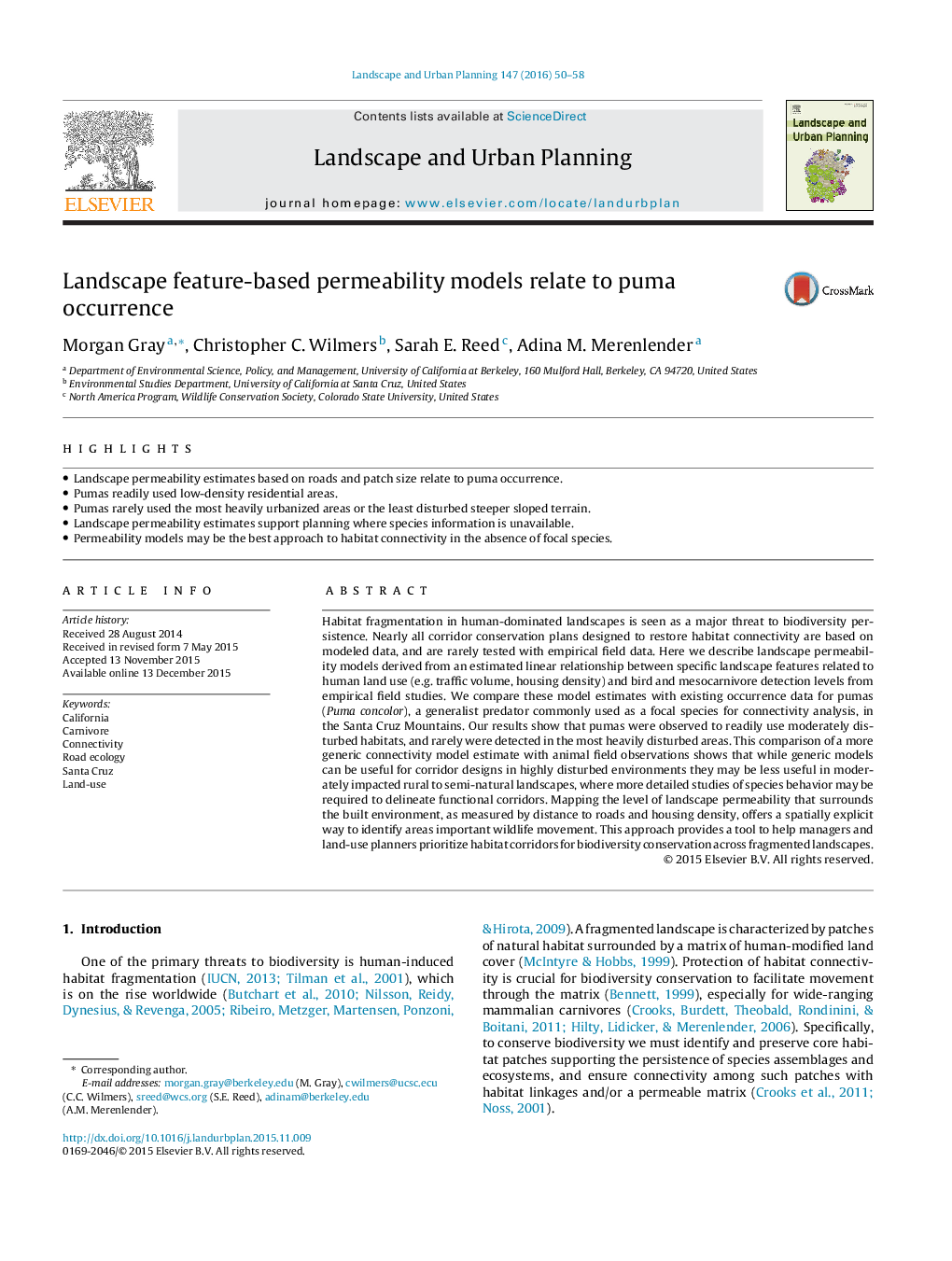| Article ID | Journal | Published Year | Pages | File Type |
|---|---|---|---|---|
| 7460832 | Landscape and Urban Planning | 2016 | 9 Pages |
Abstract
Habitat fragmentation in human-dominated landscapes is seen as a major threat to biodiversity persistence. Nearly all corridor conservation plans designed to restore habitat connectivity are based on modeled data, and are rarely tested with empirical field data. Here we describe landscape permeability models derived from an estimated linear relationship between specific landscape features related to human land use (e.g. traffic volume, housing density) and bird and mesocarnivore detection levels from empirical field studies. We compare these model estimates with existing occurrence data for pumas (Puma concolor), a generalist predator commonly used as a focal species for connectivity analysis, in the Santa Cruz Mountains. Our results show that pumas were observed to readily use moderately disturbed habitats, and rarely were detected in the most heavily disturbed areas. This comparison of a more generic connectivity model estimate with animal field observations shows that while generic models can be useful for corridor designs in highly disturbed environments they may be less useful in moderately impacted rural to semi-natural landscapes, where more detailed studies of species behavior may be required to delineate functional corridors. Mapping the level of landscape permeability that surrounds the built environment, as measured by distance to roads and housing density, offers a spatially explicit way to identify areas important wildlife movement. This approach provides a tool to help managers and land-use planners prioritize habitat corridors for biodiversity conservation across fragmented landscapes.
Related Topics
Life Sciences
Agricultural and Biological Sciences
Ecology, Evolution, Behavior and Systematics
Authors
Morgan Gray, Christopher C. Wilmers, Sarah E. Reed, Adina M. Merenlender,
